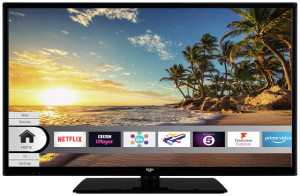Virtual Reality Buyer's Guide
Virtual Reality Buyer's Guide
Virtual reality is fast becoming one of the most popular ways to game, with helmets available for PC and PlayStation users or as standalone units if you don’t have that technology to hand. VR technology has got a lot better in recent years, but there’s still some confusion about what it does, our guide explains it all.
About the virtual reality options
The main part of a virtual reality kit is the headset, a way to present the screen for immersive viewing or gaming. They are usually adjustable to fit on the head, with lenses to help each individual get a pin-sharp focus and speakers for stereo or surround sound.
Sensors in the helmet track movement, so when you look around the scene changes, while controllers help users navigate and interact with the environments they find in the virtual world. The processing power of modern VR makes this all smooth and natural, a big step up from blocky, jerky worlds in previous generations.
Helmets can be tethered, that is wired to your PC or console, or untethered, which means users are free to experience them anywhere, but they still need power and often wires to link to other components.
What sort of virtual reality headset do you need?
This depends on what you have at home. PlayStation 4 owners already have a dedicated VR set available to them, with a new model launching soon to cater for PlayStation 5 owners. If you have a gaming-class PC, you can buy Oculus Rift S headset to use the power of your PC to create the VR visuals.
If you don’t have either of those then an all-in-one VR system like the Oculus Quest 2 does all the processing work. Also, if you have a smartphone, there are a number of headsets that turn your phone into a VR system.
Each choice limits what you can play, the most flexible being the PC-powered option as most games will work in VR thanks to a SteamVR app. Most PlayStation games work in PlayStation VR, and there are some VR-only titles. For the Oculus Rift, you are limited to a small roster of games that are compatible with that model.
The pros and cons of virtual reality sets
Even with their modern power, headsets are fidgety and can be uncomfortable for extended use, with wires trailing (depending on the kit you get) and some people fall over while playing, making it a slightly hazardous past time.
Type | Pros | Cons | Cost |
PlayStation VR | PlayStation VR works with a huge number of PlayStation 4 games with many VR exclusive titles | Soon to be superseded by a PlayStation 5 model | |
Oculus Quest 2 | Oculus Quest 2 is an all-in-one unit so you don’t need any other hardware to play. Can buy a Rift capable separately to connect to a PC. | A limited number of Quest games and storage on the system. | |
Oculus Rift 2 | Oculus Rift 2 offers the widest library of PC games and VR title support. | Requires a high-end PC to do all the heavy processing work with a USB 3.0 port. Supports Windows PCs only. |
However you experience it, VR is a great way to enjoy games or watch movies with that big-screen cinema feel.
Related products

Hitachi 58 Inch Smart 4K UHD LED TV with HDR
Hitachi 58 Inch 58HK6100UB Smart 4K UHD HDR Freeview TV



